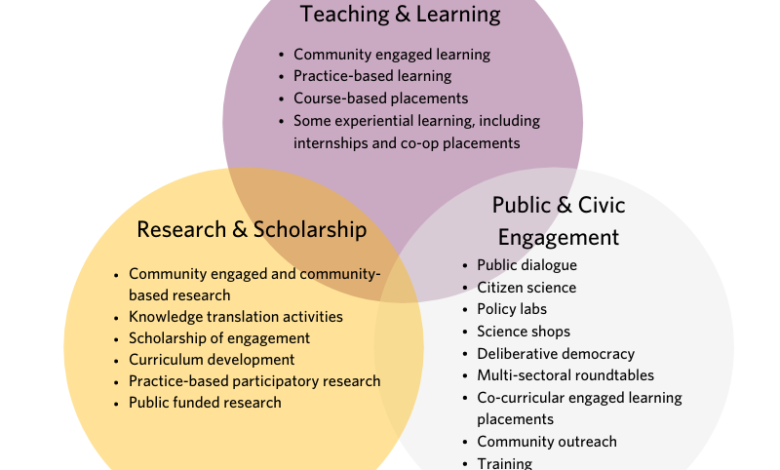The Role of community engagement in Education

Education is an essential aspect of human development, and it is critical to involve the community in education to ensure its success. Community engagement refers to the active participation of the community in the development and implementation of education policies and practices. In this article, we will explore the role of community engagement in education, its benefits, and how it can be implemented.
What is Community Engagement in Education?
Community engagement in education is the process of involving the community in decision-making regarding education. It involves engaging community members, parents, teachers, and other stakeholders in educational planning, policymaking, and implementation. Community engagement creates an opportunity for community members to have a voice in education and actively participate in the development and implementation of educational policies.
Benefits of Community Engagement in Education
There are several benefits to community engagement in education, including:
1. Increased Accountability
Community engagement in education promotes transparency and accountability in decision-making processes. When community members are involved in the development and implementation of education policies, they can hold education stakeholders accountable for their actions and ensure that decisions are made in the best interest of students.
2. Improved Educational Outcomes
Community engagement in education has been shown to improve educational outcomes for students. When community members are actively involved in education, they can provide valuable insights into the needs and challenges faced by students, which can inform educational policies and practices. This can lead to the development of effective educational programs that meet the needs of students and promote their academic success.
3. Increased Community Support
Community engagement in education can foster a sense of community and support for education. When community members are involved in education, they are more likely to support educational initiatives and programs. This can lead to increased funding for education, improved school facilities, and greater community participation in education.
How to Implement Community Engagement in Education
Implementing community engagement in education requires a systematic approach that involves all stakeholders. Here are some steps that can be taken to implement community engagement in education:
1. Identify Stakeholders
The first step in implementing community engagement in education is to identify all stakeholders, including parents, teachers, students, community members, and local organizations. This can be done through surveys, meetings, and other forms of communication.
2. Develop a Communication Plan
Once stakeholders have been identified, a communication plan should be developed to ensure that all stakeholders are informed and engaged in the process. The communication plan should outline the goals of community engagement, the roles and responsibilities of stakeholders, and the methods of communication that will be used.
3. Establish Partnerships
Community engagement in education requires partnerships between schools, families, and community organizations. Establishing partnerships can help to ensure that all stakeholders are working towards the same goals and can help to mobilize community resources to support education.
4. Provide Training and Support
Stakeholders involved in community engagement in education may require training and support to effectively participate in the process. This can include training on communication skills, leadership, and advocacy. Providing support to stakeholders can help to build their capacity to effectively engage in the process.



